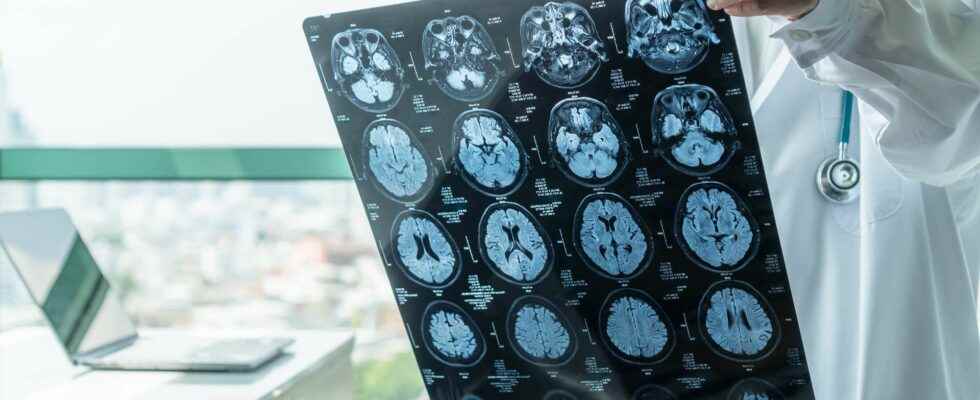France has the most powerful MRI in the world. Teams use it to better understand how our brain works, whether healthy or sick. This machine could eventually make it possible to diagnose patients with psychiatric illnesses more quickly and improve their care.
You will also be interested
[EN VIDÉO] 3D brain produced using 3D MRI Using the new IRMa 3D software, a 3D animation can be created from an MRI image. The vivid detail of these animated amplified movements can help identify abnormalities, such as those caused by blockages of spinal fluids, including blood and cerebrospinal fluid in the brain.
The CEA, or Commissariat forEnergy Atomique et aux energies alternatives, is a public research organization, working in particular on technologies for the medicine of the future. It houses a cerebral neuroimaging center by nuclear magnetic resonance in intense field named NeuroSpin. He owns the most powerful MRI in the world intended for human imaging. the you’re here is the unit of density of magnetic field.
The MRI usually used to make diagnoses in humans have a power of 1.5 tesla. That of the latest generation machines is 3 Tesla. The CEA’s MRI has a power of 11.7 Tesla: it allows the acquisition of images at very high resolution. It represents a major asset to better understand the functioning of the brain healthy or suffering from a pathology. The teams were particularly interested in bipolar disordersschizophrenia and autism spectrum disorder.
Better diagnosis of psychiatric illnesses
Today, the diagnosis of a psychiatric illness is essentially based on the clinical examination of the patient. Although essential, this does not make it possible to achieve an objective measurement as is practiced in other fields of medicine. For example, in many diseases, it is possible to measure the concentration of markers in the blood to refine the diagnosis.
The researchers explain that their objective: What we seek to develop is the equivalent of a thermometer which, by giving a quantitative and objective measurement, will help the practitioner to make a diagnosis “. This tool could also have apps upstream of the onset of clinical signs: by identifying the patients most at risk of developing a psychiatric illness.
Better patient care
Similarly, the doctor only has the clinical examination to assess the evolution of a psychiatric pathology. For example, to assess the progression of a cancer or the effectiveness of a treatment, a oncologist has two images that he can compare objectively by making measurements.
In psychiatry, some patients will respond to the first treatment offered to them while, for others, several attempts will be necessary before finding the right drug at the right dose. On the basis of the clinical examination alone, it is often necessary to wait several weeks, even several months, before knowing if the treatment is working for the patient. The 11.7 tesla MRI could make it possible to identify more quickly whether the treatment is effective or not.
It is by comparing data from the brains of healthy patients and sick patients that the researchers will learn to decode the images. This is a first step towards personalized medicine in psychiatry.
In addition to the workshops offered throughout France by the Society of Neurosciences, at the origin of Brain Week, Futura highlights the latest scientific advances concerning our ciboulot. Cognition, psychology or even unusual and extraordinary stories, a collection ofitemsof questions answers and of podcast to be found all this week under the tag ” brain week » and on our social networks!
Interested in what you just read?
